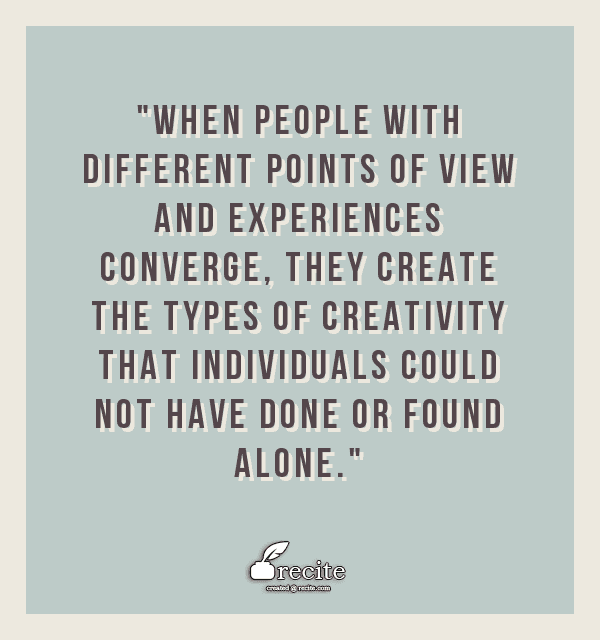The value of business design thinking
Tuesday, January 5, 2016

How thinking better and differently can be taught and learned to maximize and enhance an organization’s performance.
Business design thinking can not only transform a business but also help an organization catapult to greater levels of success. These organic, flexible, and inclusive methods are the path to enhanced performance and greater prosperity. Business design thinking draws upon the lessons of design, humanistic management, and system’s theory, effectively integrating complexity into a coherent and elegant experience.
There are a number of key principles for business design thinking, but for this post, we will discuss three of the most important ones:
- “Discover-Craft-Build” iterative cycles
- Employ a cross-functional / team-based approach
- Build a culture of collaboration
The “Discover-Craft-Build” iterative cycles
Iterative cycles based on design thinking have many benefits. Think in terms of cycles, not linear “1,2,3” steps. Problem-solving is better tackled in small bites of exploring, designing, building, and testing, then adjusting.
Create your iterative business design thinking process for the problem-solving phase by following a model of DCB: Discover-Craft-Build. In your Discover phase, collect and analyze data and insights and create solution options. Next, in the Craft phase, observe interactions from the prototypes of solution options. Lastly, in the Build phase, construct your solution by developing action plans and use feedback methods to iterate and improve.

There are several benefits to working in iterative cycles:
- Early on you are able to rapidly gather initial requirements and plans; you can quickly create premises and assumptions and discover problems earlier.
- Having reliable feedback sooner than later is invaluable. In the Craft phase, using a prototype to test and gather feedback enables you to swiftly determine if you are on the right track.
- By using iterative cycles, you spend less time documenting and more time designing and developing. Additionally, you are able to respond to changing company, market, or environmental fluctuations.
Overall, these factors will reduce time and costs for problem-solving efforts.
Employ a cross-functional/team-based approach
Nearly every business problem today is mired in complexity. To address complex issues, form a team, and design strategic conversations. While any individual can ideate and create new things, leveraging diverse thoughts and gaining input from different perspectives can generate growth and sustain a company’s competitive advantage now and in the future.
The key is to have a mix of management and staff and a diverse set of skills and ways of thinking. When people with different points of view and experiences converge, they create the types of creativity that individuals could not have done or found alone. While any individual can ideate and create new things, leveraging diverse thoughts and gaining input from different perspectives can solve the most complex problems.
There are even greater reasons for using a team-based approach. All too often an organization will suffer from “groupthink,” whereby the desire for harmony or conformity in the company will result in an unfounded decision-making outcome. By bringing together individuals with different cultures, backgrounds, and personalities, they will become more empathetic to new ideas. Additionally, they will better able to address problems and create solutions that can kindle creativity, provide insight, and improve efficiency.
Build a culture of collaboration
Collaboration is the fuel of any business, whether it’s between employees, partners, or customers. It is a driving force for continued efficiency among everyday tasks and a necessity for improving the outcomes of many business activities. Nearly 80% of the senior executives surveyed in a 2005 study said that effective coordination across product, functional and geographic lines was crucial for growth.
Collaboration helps spur original thinking, with connections happening across locations and departments that couldn’t have previously occurred. By nature, collaboration brings different voices, teams, specialties, and opinions together to co-create and solve an existing problem or develop something completely new.
So, what can you gain by applying these principles of business design thinking? As a result, you can:
- Simplify and clarify information
- Conceive and make things
- Envision ideal user experiences and new product offerings
- Differentiate products, places, and messages
- Systematically test and iterate concepts until you get them right
By applying business design thinking, you can transform your business to be an adaptive, responsive, innovative company that can thrive in this tough, ever-changing world we live in.

Parker Lee is president of Compass52 and has been actively designing organizations for better performance and empowering change since the 1970s. Previously, he was president and executive vice president of business development at XPLANE, which, under his leadership, enjoyed significant annual growth while delivering innovative design thinking engagements for clients globally. During the “dot com” era, he acted as vice president of business development for four pre-IPO technology companies and pioneered the use of social media for use in communications for the California State Democratic Party during the 2004 election. Lee is a graduate of UC Davis in Organizational Development.
If you enjoyed this article, join SmartBrief’s e-mail list for our daily newsletter on being a better leader and communicator.
Originally published at smartblogs.com on January 5, 2016.

